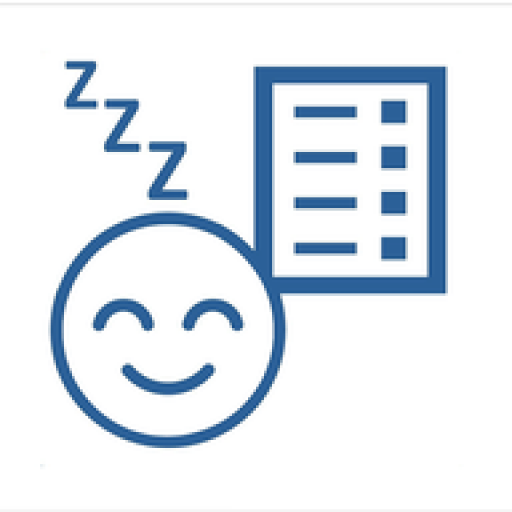Unlocking the Secrets of Memory: The Best Way to Improve Your Dream Recall
Introduction
Have you ever woken up from a vivid dream, only to have it slip away from your memory like sand through your fingers? Dream recall is a fascinating aspect of our inner world, often filled with insights, creativity, and emotions waiting to be discovered. In this comprehensive guide, we’ll delve into the world of dreams and explore the best way to improve your dream recall. Whether you’re interested in understanding your subconscious or exploring the art of lucid dreaming, these techniques will help you unlock the hidden treasures of your nighttime adventures.
Chapter 1: The Mysteries of Dream Recall
Before we dive into the “how” of improving dream recall, let’s unravel the “why.” Understanding the significance of dream recall can be a powerful motivator:
- Self-Discovery: Dreams often contain symbols, emotions, and themes that provide valuable insights into your inner world.
- Lucid Dreaming: To become proficient in lucid dreaming, where you’re aware you’re dreaming and can influence the dream’s course, you need to remember your dreams clearly.
- Creative Inspiration: Many artists, writers, and inventors draw inspiration from their dreams. Improving dream recall can stimulate your creativity.
Chapter 2: The Science Behind Dream Recall
To grasp the best way to improve dream recall, it helps to understand the science behind it. Dreams primarily occur during the REM (Rapid Eye Movement) stage of sleep. Here’s a brief overview of the sleep cycle and its relation to dream recall:
- The Sleep Cycle: Sleep consists of multiple cycles, including REM and non-REM sleep. Dreams predominantly occur during REM sleep.
- Dream Memory Consolidation: Dreams are initially stored in short-term memory and later transferred to long-term memory. Interrupted sleep can hinder this process.
Chapter 3: The Dream Journal: Your Best Friend in Dream Recall
One of the most effective tools for enhancing dream recall is the dream journal. This chapter will guide you through creating and maintaining your dream journal:
- Choosing a Journal: Select a dedicated notebook or use a digital journaling app.
- Record Immediately: Make it a habit to jot down your dreams as soon as you wake up. Include details like people, places, emotions, and any unusual occurrences.
- Consistency Matters: The more consistent you are in recording your dreams, the sharper your dream recall will become.
Chapter 4: Visualization and Mindfulness
Visualization and mindfulness techniques can significantly improve your dream recall:
- Visualization Exercises: Before sleep, visualize yourself recalling your dreams in vivid detail. This primes your mind for improved recall.
- Mindfulness Practice: Engage in daily mindfulness exercises to enhance your awareness. A more mindful waking life often translates to better dream recall.
Chapter 5: Reality Checks and Dream Signs
Lucid dreamers rely on reality checks and dream signs to trigger lucidity. Understanding and utilizing these concepts can boost your dream recall:
- Reality Checks: Incorporate reality checks into your daily routine. These simple actions help you determine whether you’re dreaming or awake.
- Dream Signs: Pay attention to recurring themes, characters, or situations in your dreams. These dream signs can serve as cues for lucidity and improved recall.
Chapter 6: Diet and Lifestyle for Dream Recall
Your daily habits and diet can significantly impact your dream recall:
- Nutrition: A balanced diet rich in nutrients, particularly vitamin B6, can promote more vivid dreams and better recall.
- Limit Alcohol and Caffeine: Excessive alcohol and caffeine consumption can disrupt your sleep patterns, making it harder to remember dreams.
Chapter 7: Sleep Hygiene
Maintaining proper sleep hygiene can optimize your dream recall:
- Consistent Sleep Schedule: Going to bed and waking up at the same time each day helps regulate your sleep cycles, making it easier to recall dreams.
- Screen Time: The blue light from screens can interfere with sleep quality. Avoid screens at least an hour before bedtime.
Chapter 8: Dream Enhancement Techniques
This chapter explores advanced techniques to enhance dream recall:
- Wake-Back-to-Bed (WBTB): Waking up during the night and then going back to sleep can increase your chances of experiencing vivid dreams.
- Dream Incubation: Before sleep, focus your thoughts on a specific dream or question you’d like your dreams to address. This can lead to more memorable dream experiences.
Chapter 9: Troubleshooting Dream Recall Challenges
Sometimes, despite your best efforts, you may face challenges in improving dream recall. This chapter offers solutions to common issues:
- Stress and Anxiety: High-stress levels can hinder dream recall. Incorporate stress-reduction techniques into your daily routine.
- Medications: Some medications can affect dream recall. Consult your healthcare provider if you suspect this is an issue.
Chapter 10: Embracing the World of Lucid Dreaming
As your dream recall improves, you’ll be better prepared to explore the world of lucid dreaming:
- Reality Testing: Use your enhanced dream recall to implement reality tests regularly, increasing the likelihood of lucid dreams.
- Lucidity Techniques: Explore techniques like MILD (Mnemonic Induction of Lucid Dreams) and WILD (Wake-Initiated Lucid Dreams) to induce and prolong lucidity in your dreams.
Conclusion
Improving dream recall is a journey into the depths of your subconscious mind, where creativity, self-discovery, and lucid adventures await. By applying the techniques and strategies outlined in this guide, you’ll not only enhance your dream recall but also embark on a thrilling adventure within your own psyche. The key to unlocking the enigmatic world of your dreams is within your reach – all you need to do is remember. Sweet dreams!





Leave a Reply